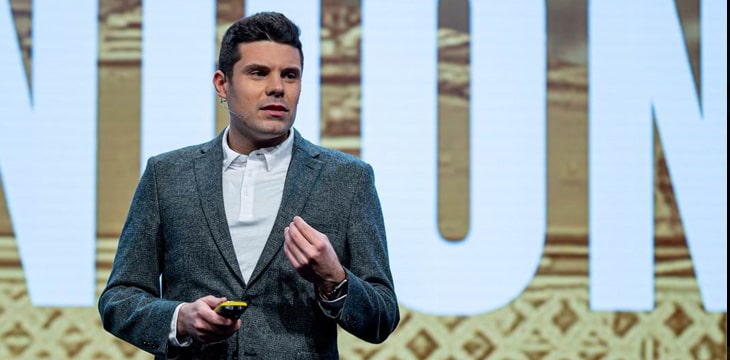|
Getting your Trinity Audio player ready...
|
“You may think I’m crazy or whatever, but that’s what actually happened.”
How did Alex Agut and HandCash first come up with the idea for the Duro? And will their efforts to create a whole new name for Bitcoin units take off in the gaming and online shopping worlds? Find out in this week’s episode of The Bitcoin Bridge, available on Streamanity.
The public first heard of HandCash’s Duro idea last week, but as Alex tells us, the plan has been around for a long time. We have Bitcoin units and satoshis… but if you try to price goods in either, it doesn’t look familiar to most people. Too many decimal places.
Introducing Duro pic.twitter.com/EbSYIx1sWf
— Duro (@duro_money) March 31, 2021
The Duro is an attempt to “re-brand” Bitcoin prices so they look more like the prices people are used to. Technically, it’s just a name—there’s no Duro token, and it’s not a stablecoin. All it requires is some interface changes in wallet and payment-accepting apps that convert the prices to BSV units in the background.
That said, it will still take some getting used to, and Bitcoin users will still need to be convinced that the Duro is a better way of doing things. After all, you can’t trade Duros and their value will always be pegged to Bitcoin.
But the Duro isn’t for seasoned Bitcoiners. It’s aimed more at those who’ve never used it before: gamers and shoppers who are familiar with the concept of in-app currencies. They might even be put off at the idea of using Bitcoin… but not Duros. For many, that will help fulfil the “dream” of moving Bitcoin use into the background, moving attention away from Bitcoin-holding and its enthusiast culture, which comes with its own baggage. That way, people can use Bitcoin while caring only that they’re using a technology that works (and works well).
We could’ve done this with Bitcoin years ago, but only since Bitcoin SV (BSV) restored the original protocol rules has Bitcoin become usable for small purchases again.
The name, Alex explains, comes from a centuries-old informal Spanish word for 5 pesetas. Eventually it became so widely used that Duro coins were issued. The word also means “hard” (as in tough, durable) in Spanish, so it suits money well.
Watch the full interview to get the whole story, how app developers and users have responded to the idea, and what Alex thinks it’ll take for the concept to gain acceptance. A simple idea can be just as hard to sell as a new technology protocol, so it’s not guaranteed. What do you think?
Check out previous episodes of The Bitcoin Bridge on Streamanity.

 12-21-2025
12-21-2025 




